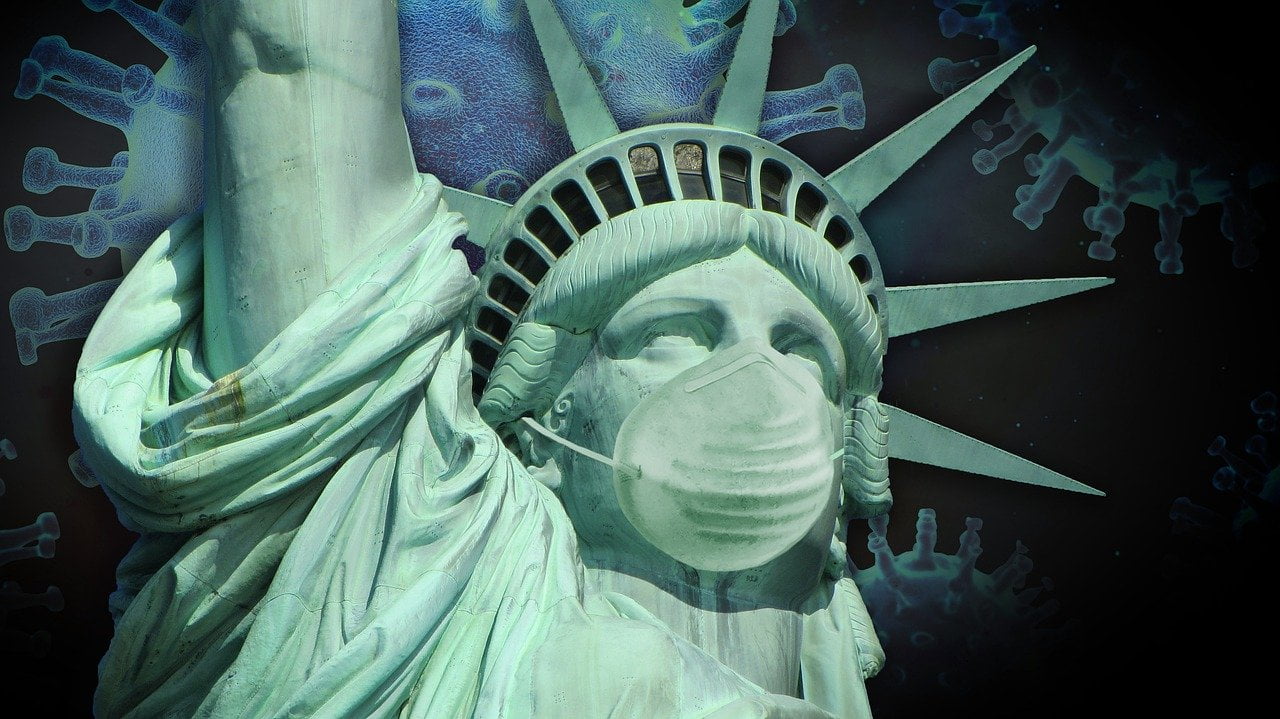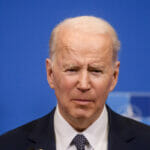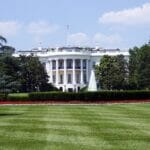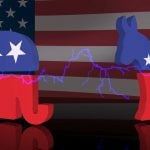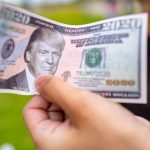CDC Admission Implicates Air Force One; Aerosols Can Spread COVID, Despite HEPA Filters
Q2 2020 hedge fund letters, conferences and more
Passengers Aboard Air Force One Might Have Become Infected With COVID
WASHINGTON, D.C. (October 5, 2020) - The CDC's admission that COVID can be spread by aerosols which linger in the air, and can travel well beyond 6 feet from space to space, as well as be circulated through a ventilation system, lends credence to the suggestions that some of those closest to President Trump who have contracted COVID might have become infected aboard Air Force One, especially since many passengers reportedly refused to wear masks, says public interest law professor John Banzhaf.
The now outdated guideline - that maintaining a 6-foot separation provided adequate protection against the transmission of this highly contagious disease - has long been outdated by new research, and in any event was never realistic, says Banzhaf, based upon his expertise and expert testimony in dealing with particles of tobacco smoke which many used to claim likewise did not spread, and allegedly could not cause harm beyond a few feet from the smoker.
The CDC was not the only source of confusion if not outright deceit, suggests Banzhaf, pointing to the airline industry and its defenders.
Florida Governor Ron DeSantis recently echoed claims by airlines that the HEPA filters and other measures make flying safe during the pandemic, but new evidence of actual transmissions in flight caused by airborne coronavirus particles, plus lessons learned before smoking on planes was banned, show that flying can still cause infection with this deadly coronavirus, says Banzhaf, the man behind the ban on smoking about commercial carriers.
For example, 187 passengers and 6 crew on a TUI AG flight from Zante to Cardiff were quarantined after at least 16 cases of COVID-19 were confirmed after an August 25th flight.
A CDC study of two Korean flights showed that even asymptomatic passengers could and did spread the coronavirus to other passengers even though each passenger was given an N95 mask, and staff members followed strict infection-control procedures at the airport and in the air overseen by the Korea Centers for Disease Control and Prevention.
Also, Qingyan Chen, a professor of mechanical engineering at Purdue University, cited two other international flights: on the first a single passenger infected 14 people while flying from London to Hanoi. There was also transmission of the deadly virus on a second flight from Singapore to Hangzhou, even though all passengers were wearing face masks.
Experts have also pointed out that boarding and deplaning – when the plane’s ventilation system isn’t even running, and people are unable to stay distanced from one another – is one of the riskiest parts of the airline travel process, as is going through security and waiting in the departure lounge where ventilation may likewise be very poor.
So, while airlines are increasingly touting what they call their superb ventilation system and HEPA filters in an effort to convince passengers that it is safe to fly despite coronavirus particles released into the air by other passengers, they made virtually the same false claims about microscopic tobacco smoke particles back in the days when smoking was permitted aboard commercial flights, notes Banzhaf.
But even once smoking during flights was restricted to small smoking sections, and the percentage of smokers shrank, passengers in the no-smoking section most distant from a smoker would still know the minute anyone lit up, despite the so-called “superb” ventilation system and “hospital style” high-efficiency particulate air (HEPA) filters, because the minute particles of tobacco smoke would drift rapidly throughout the airplane, says Banzhaf, whose legal actions first required airlines to provide no-smoking sections, and eventually led to a ban on smoking on all flights.
Airline Ventilation Systems Did Not Protect Passengers
Obviously airline ventilation systems with HEPA filters - presumably including Air Force One - did not protect passengers from inhaling drifting particles of smoke, something which was undeniably clear to any passenger with a sense of smell.
If the coronavirus had an odor, few people would fly, or want to be near a possible COVID carrier, because they would have the same irrefutable proof that – as with tobacco smoke particles – others are being exposed to deadly airborne particles, he argues.
Many media reports, and videos of actual flights, show that enforcement of airline requests that passengers wear masks is spotty to non-existent, and there still is no federal law or regulation requiring passengers to wear marks. Masks were not required, and reportedly were rarely worn, aboard Air Force One and the smaller helicopters in which the President flew with many other guests.
The same problem of lack of enforcement occurred years earlier with regard to smoking, even though federal law restricted or later prohibited smoking aboard flights, because airlines were reluctant to enforce the requirements upon passengers who objected, says Banzhaf.
If airlines didn’t even enforce a requirement imposed by federal law, we certainly can’t expect them to do so – in effect, bet our lives on it – when there are no federal rules, much less laws, requiring masks on planes, suggests Banzhaf.
Moreover, he notes, passengers are of course permitted to remove their masks while drinking or eating (even food or beverages they brought on board where the airline doesn’t serve any), and there is no way to insure that passengers do not remove their masks in the restrooms, thereby potentially infecting all subsequent restroom users with a deadly virus which can linger in the air for hours according to recent research findings.
Irresponsible Behavior Of Passengers
Indeed, a new study shows that more than 10% of adults do not even wash their hands after using a restroom. So, in addition to potentially infecting other passengers with germs when they return to their airplane seats, this irresponsible behavior suggests that they are even less likely than other passengers to wear masks when in an airplane restroom, suggests Banzhaf.
Professor Banzhaf also notes that, despite claims about how often the ventilation system exchanges the air, airlines in the past would frequently reduce the amount of fresh air introduced into the cabin – something the passengers could not readily detect, and often without even telling the flight attendants – because it saved them money, since there is an added cost of bringing in fresh air from the outside.
Thus, says Banzhaf, there is no guarantee that the same substantial reduction in the quality of air in the cabin from failing to introduce sufficient outside air into the ventilation system – and in passenger safety and health – will not occur now, especially when major carriers are desperate to save money, and there are no federal laws, rules, or regulations preventing or even restricting this potentially deadly cost-saving measure.
Air Force One Passangers
Theoretical studies, which now confirm actual experience, show that a single airline passenger with COVID-19 – even if he is displaying no symptoms – can infect other passengers several rows in front of as well as behind him, despite the vaunted airplane ventilation system.
Mounting evidence – including “super-spreading” events in which multiple choir singers, restaurant diners or dance students were infected – suggests, as the CDC just admitted, that the virus can be and is transmitted through microscopic droplets known as aerosols that can float in the air, potentially for hours, as well as larger particles which do not remain in the air as long.
Indeed, there have been well documented events in which the virus has actually traveled as much as 26 feet (in a meat-packing plant) and 14 feet (in a well ventilated restaurant).
So, even if it were somehow possible to maintain a 6-foot social-distance separation between passengers – not only during the flight, but also during the more crowded boarding and disembarking process – it would be woefully insufficient to provide even minimal protection from possible death or disability from COVID-19, argues Banzhaf.
He asks, by way of analogy, how many people would be willing to walk through a room filled with deadly king cobras – whose striking range is said by experts to be no greater than 6 feet – if they were guaranteed to come no closer than 6 – or even 14 – feet from any snake.
An example of just how dangerous flying can be is the experience of a virologist and epidemiologist who, because he was all too well aware of the risks of COVID-19, was very careful to wear a mask and gloves, and to wipe down all the surfaces which he touched, on a single recent flight.
He nevertheless contracted COVID-19 just days after his flight, and believes that – because of the many precautions he was so careful to take – it had to come from airborne virus particles which entered through his eyes during the flight.
This is just the kind of evidence which has convinced Dr. Anthony Fauci, the nation’s top infectious disease experts, not to risk his life by flying, probably not until there is a proven vaccine.
So, “don’t bet your life on airline HEPA hype,” Professor Banzhaf warns.
